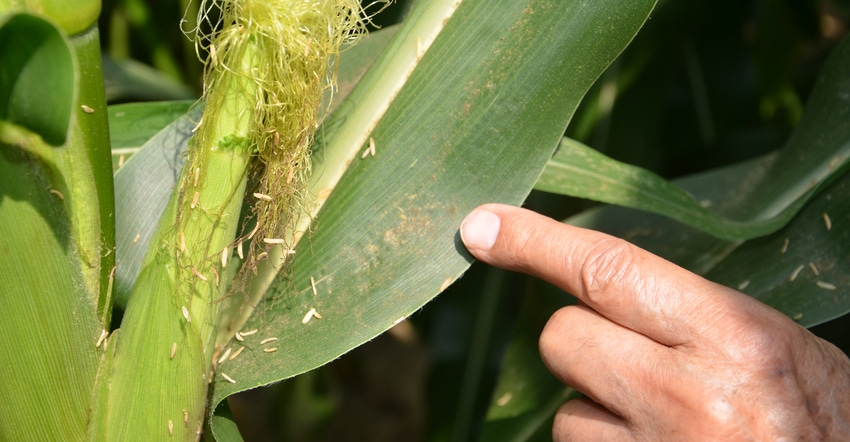November 26, 2018

Let’s talk about specific ways to boost corn yields in 2019. Here are 13 tips:
1. Use seed-applied insecticides. Select products such as Cruiser or Poncho to control secondary insects whether you’re using GMO traits or not.
2. Fine-tune your planter. There are excellent technologies available. However, you don’t need every bleeding-edge technology if you get each planter unit checked and don’t plant too fast. Use common sense!
3. Achieve uniform emergence. Prepare a good seedbed and plant into moisture, but don’t plant too shallow or too deep. Use seed firmers. Plant hybrids with excellent seed emergence and cold tolerance, and use uniformly graded seeds. Achieve uniform spacing. Check each row and adjust if needed.
4. Plant at least four to six hybrids of different maturities. Plant alternate strips of two hybrids. Select hybrid pairs for each field that differ in pollination dates by a couple of days to spread pollination in case it gets very hot. I’ve seen many growers use this method with great success. Match hybrid pairs of similar plant height to avoid shading by the taller hybrid.
5. Select disease-resistant hybrids. There are no hybrids immune to all pathogens. Be proactive in using foliar fungicides if disease symptoms appear at flowering and are near the ear leaf. Protect the ear leaf and all leaves above it.
6. Plant early if you can. Maximize use of solar energy when possible. However, you don’t have to be the first to start planting! Studies show early planting offers not only maximum yield potential, but also less stalk lodging, drier grain and higher test weight as compared to later plantings. However, certain soil types don’t dry early, so you must be patient.
7. Maintain adequate planting populations. Match seeding rates for different hybrids. Don’t plant all hybrids at one population. Don’t pair flex-ear and fixed-ear hybrids in the same field since fixed-ear hybrids need higher populations.
8. Use GPS technology and experiment with new technologies. Be an innovator and stay on the cutting edge, but avoid being on the bleeding edge. Zero in on precision application of fertilizers and chemicals, and avoid overlapping applications.
9. Start controlling weeds at an early stage. Early weeds hurt yields. Light reflected from weeds affects growth of crop plants. Use appropriate herbicides, rotate chemistry and use different herbicides for corn and soybeans to combat resistant weeds.
10. Control insects. Rootworm beetles, Japanese beetles and aphids that aren’t controlled by genetic traits must be controlled by insecticides if populations warrant treatment.
11. Take time to calibrate yield monitor. You can learn a lot about field patterns, fertilizer, hybrids, diseases and weeds if your yield monitor has been properly set up.
12. Harvest early to lessen chances of grain loss. Your highest yield is when you harvest at about 28% moisture. After that, ear droppage, stalk lodging and ear rots start taking their toll. Check stressed fields first. Do the stalk pinch or push test to decide which fields to harvest first to minimize harvest losses.
13. Move stripper plates in on small-eared corn. Follow ag engineering guidelines to measure harvest loss behind combine. Regrowth after harvest this fall indicated many farmers probably left more corn behind than they thought.
Nanda is president of Agronomic Crops Consultants LLC. Email him at [email protected] or call 317-910-9876.
About the Author(s)
You May Also Like






